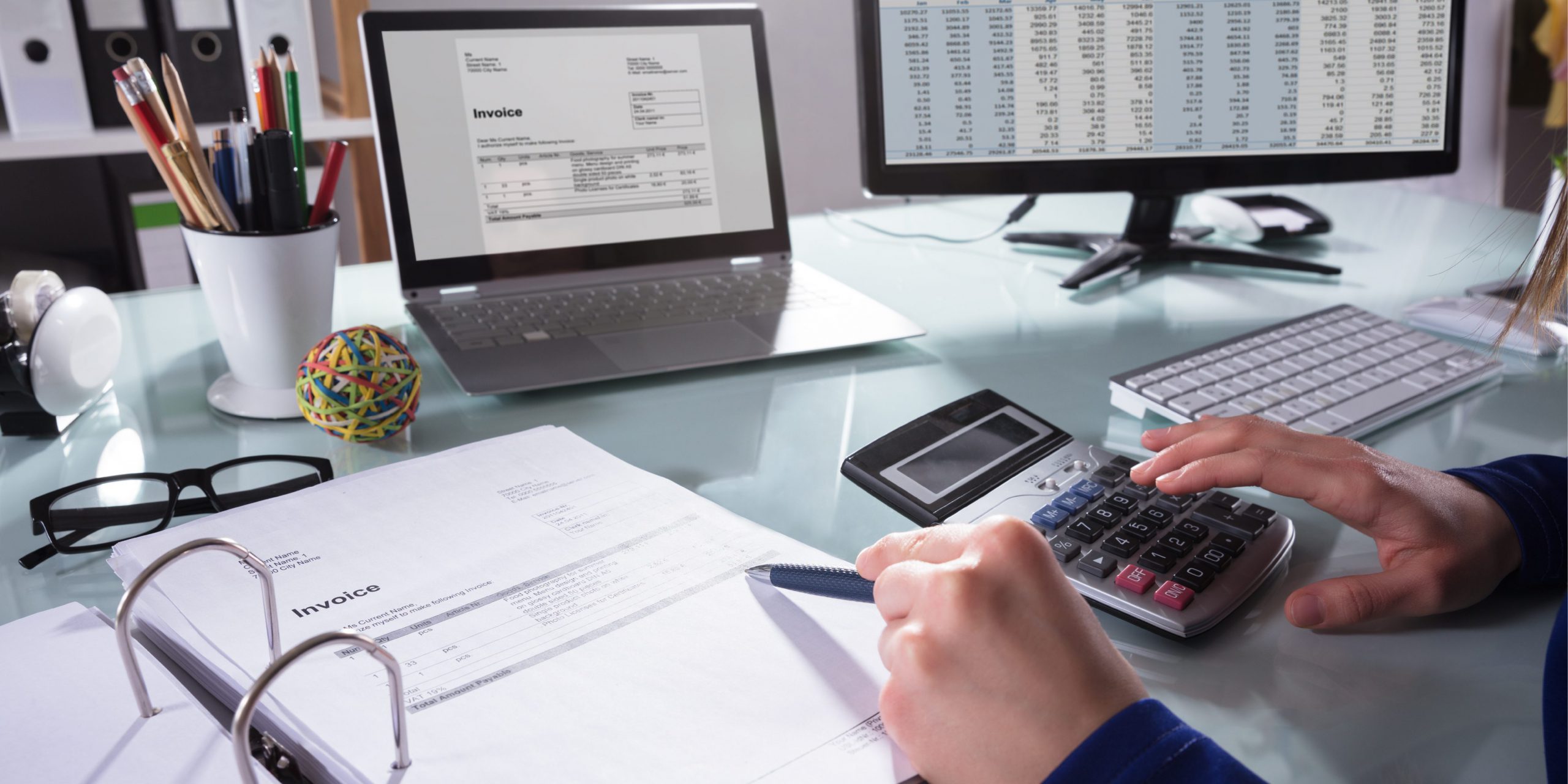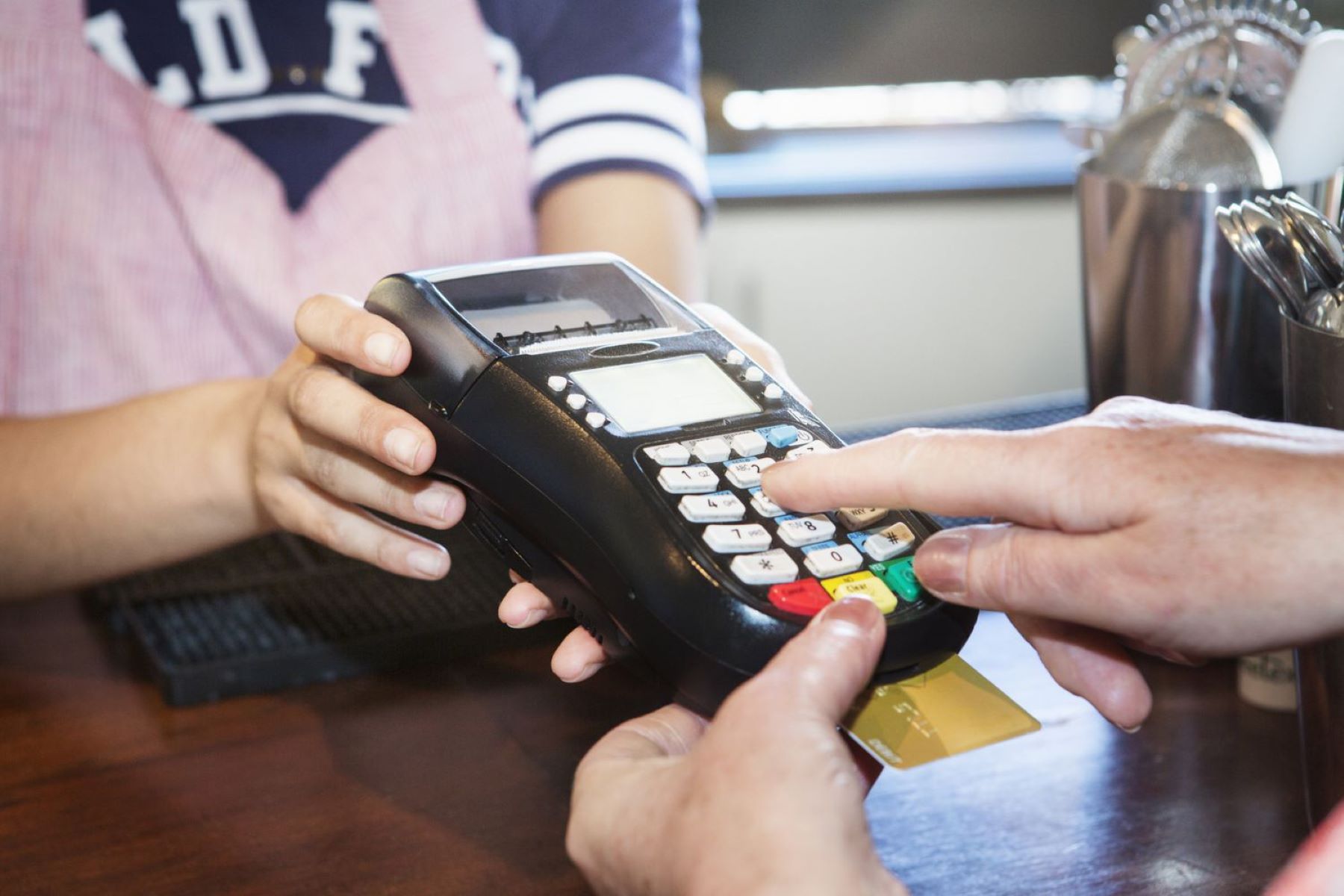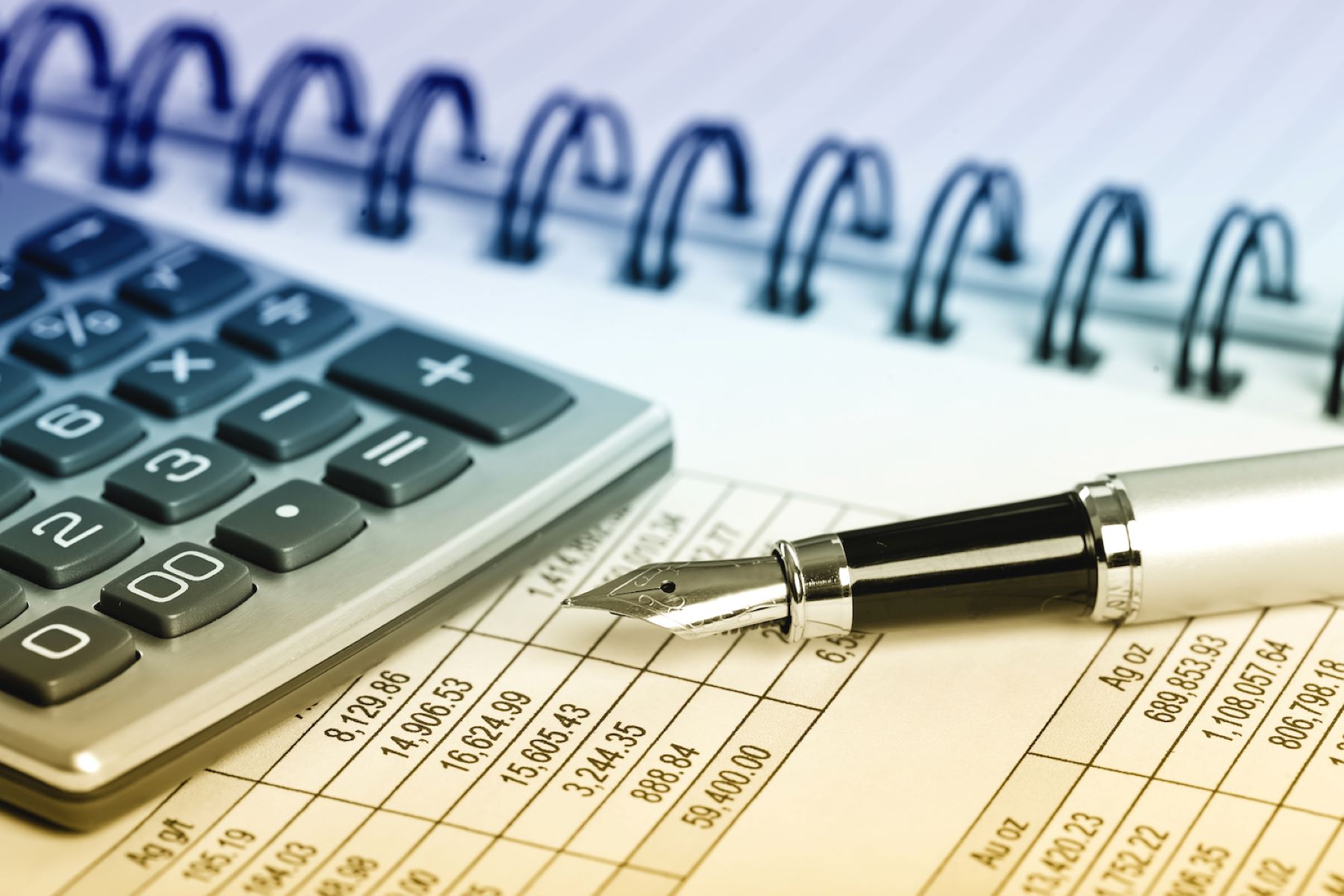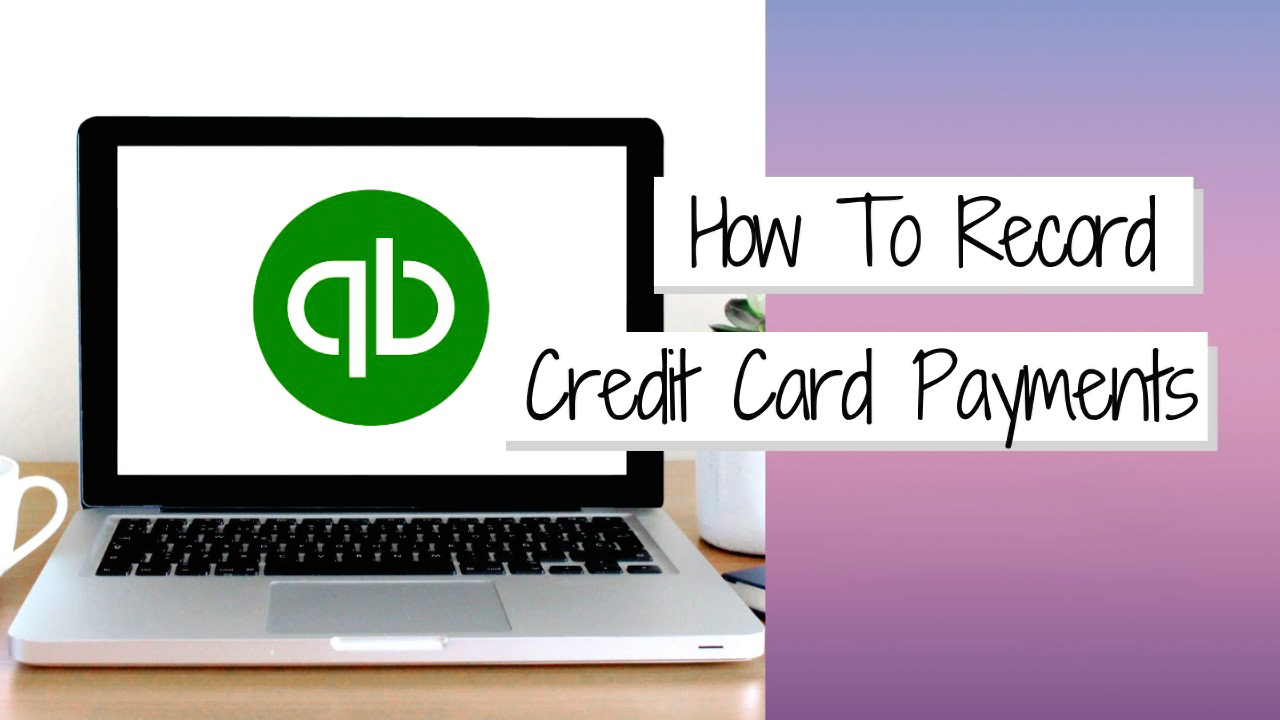Home>Finance>How To Record Credit Card Payments In Accounting


Finance
How To Record Credit Card Payments In Accounting
Published: November 10, 2023
Learn how to accurately record credit card payments in your accounting system. Improve your finances and keep track of your expenses with these helpful tips.
(Many of the links in this article redirect to a specific reviewed product. Your purchase of these products through affiliate links helps to generate commission for LiveWell, at no extra cost. Learn more)
Table of Contents
Introduction
Welcome to the world of finance and accounting! In this article, we will delve into the topic of recording credit card payments in accounting. Whether you are a business owner, a bookkeeper, or a student studying finance, understanding how to accurately record credit card payments is essential for maintaining accurate financial records.
Credit cards have become an integral part of our daily lives, allowing us to make purchases conveniently and securely. They provide us with a line of credit that can be used for various purposes, whether for personal or business expenses. However, when it comes to keeping track of these payments in accounting, things can get a bit tricky.
Properly recording credit card payments is crucial for several reasons. It ensures that your financial statements reflect the accurate state of your business or personal finances. It also helps you track your expenses, manage your cash flow, and comply with tax regulations. The accuracy of your credit card payment recording can greatly impact the health and success of your financial operations.
In this article, we will explore the process of setting up credit card accounts, recording credit card payments, and the importance of accurate credit card payment recording. We will also provide some handy tips for efficient credit card payment recording. So, let’s dive into the world of credit card accounting and explore the best practices to keep your financial records in order!
Understanding Credit Card Payments in Accounting
Before we delve into the process of recording credit card payments in accounting, it’s important to have a clear understanding of how credit card payments are treated in financial statements. In accounting, credit card payments are considered a form of liability. This is because when we make a purchase with a credit card, we are essentially borrowing money from the credit card issuer, creating a debt that needs to be repaid.
When you receive your credit card statement, it will typically include a summary of all the transactions made on your card during a specific period, along with the minimum payment required and the due date. It is important to note that the credit card statement represents the outstanding balance on your credit card, which is the total amount owed to the credit card issuer.
When you make a payment towards your credit card balance, it reduces the amount of debt you owe to the credit card company. This payment is recorded as a reduction in your credit card liability and an increase in your cash or bank account. Essentially, it is a transfer of funds from one asset category (cash) to another liability category (credit card debt).
It’s worth mentioning that credit card payments may also involve additional fees such as interest charges, late fees, or cash advance fees. These fees are typically recorded as expenses in the appropriate accounts.
Understanding the treatment of credit card payments in accounting is crucial for maintaining accurate financial records. By recording credit card payments correctly, you ensure that your financial statements reflect your true financial position, which is essential for making informed business decisions and complying with accounting principles.
Now that we have a solid understanding of credit card payments in accounting, let’s move on to the next section where we will discuss how to set up credit card accounts in your accounting system.
Setting Up Credit Card Accounts
Before you can start recording credit card payments in your accounting system, you need to set up credit card accounts. This step is crucial as it allows you to track and reconcile your credit card transactions accurately.
The first step in setting up credit card accounts is to create a separate account in your chart of accounts specifically for your credit card. This account will be classified as a liability account since it represents the debt owed to the credit card company. Assign a unique account number or code to easily identify and track this account.
Next, you will need to link your credit card account to your bank or financial institution. This can usually be done through your accounting software by adding the necessary details such as the credit card provider’s name, account number, and online banking information. By linking your credit card account, you can automatically import your credit card transactions into your accounting software, saving you time and reducing the risk of errors.
Once your credit card account is set up, you should also establish a clear naming convention for your credit card transactions. This involves assigning unique identifiers or labels to each transaction, making it easier to identify and categorize them correctly.
It’s important to note that if you have multiple credit cards for different purposes, such as one for business expenses and another for personal use, it is recommended to set up separate credit card accounts for each. This ensures proper segregation of expenses and makes it easier to analyze your financial statements.
In addition to setting up credit card accounts, it’s also essential to reconcile your credit card statements regularly. Reconciliation involves comparing your recorded transactions in your accounting system with the transactions listed on your credit card statement. This process helps identify any discrepancies or errors and ensures the accuracy of your credit card payment recording.
Setting up credit card accounts and establishing a systematic approach to track and reconcile credit card transactions is crucial for maintaining accurate financial records. It provides you with a clear overview of your credit card liabilities and helps streamline your accounting processes.
Now that you have set up your credit card accounts, it’s time to move on to the next section, where we will explore how to record credit card payments in your accounting system.
Recording Credit Card Payments
Recording credit card payments accurately is essential for maintaining accurate financial records and ensuring the integrity of your accounting system. Let’s explore the step-by-step process for recording credit card payments:
- Enter the Payment: Start by entering the credit card payment transaction into your accounting software. Select the appropriate credit card account as the “To” account and choose your cash or bank account as the “From” account. Enter the payment amount and any additional details such as the payment date and payment method.
- Allocate the Payment: Next, allocate the payment to the appropriate expense or liability accounts. Review your credit card statement or financial records to determine the specific transactions or expenses covered by the payment. Allocate the payment amount to the respective accounts based on the nature of the expenses.
- Reconcile the Transaction: Once the payment is recorded, reconcile the credit card payment transaction with your credit card statement. Compare the recorded payment in your accounting software with the payment listed on your statement to ensure they match. This step helps identify any discrepancies or errors.
- Include Fees or Charges: If your credit card payment includes any additional fees or charges, record these separately in your accounting system. Common fees may include interest charges, late fees, or cash advance fees. Allocate these fees to the appropriate expense accounts.
- Keep Supporting Documentation: It is important to maintain supporting documentation for each credit card payment, such as receipts or invoices. This documentation serves as evidence of the expenses incurred and can be useful for auditing purposes or future reference.
By following these steps, you can ensure that your credit card payments are accurately recorded in your accounting system. This not only helps maintain the accuracy of your financial statements but also facilitates better financial analysis and decision-making.
Remember, consistency and attention to detail are key when recording credit card payments. Regularly reviewing and reconciling your credit card statements can help identify any errors or discrepancies and address them promptly. It’s also important to keep track of any fees or charges associated with your credit card payments to accurately reflect the true cost of using credit cards for your business or personal expenses.
Now that you have a clear understanding of how to record credit card payments, let’s move on to the next section, where we will discuss the importance of accurate credit card payment recording.
Importance of Accurate Credit Card Payment Recording
Accurate credit card payment recording is critical for maintaining the integrity of your financial records and ensuring the overall financial health of your business. Let’s explore the key reasons why accurate credit card payment recording is important:
- Financial Analysis and Decision Making: Accurate credit card payment recording allows you to have a clear and up-to-date view of your financial position. This enables you to perform accurate financial analysis and make informed decisions based on reliable data. You can evaluate your spending patterns, track expenses, and identify opportunities for cost savings or revenue generation.
- Expense Tracking and Budgeting: Recording credit card payments accurately helps you track your expenses more effectively. By categorizing expenses with precision, you can see how much you are spending in different areas of your business or personal finances. This information is essential for budgeting purposes and helps you identify areas where you may need to cut back or allocate more funds.
- Cash Flow Management: Accurate credit card payment recording plays a vital role in managing your cash flow. By recording credit card payments promptly, you can track the outflow of funds from your cash or bank accounts. This allows you to assess your cash flow situation, analyze your liquidity, and plan for any upcoming cash needs.
- Compliance and Tax Reporting: Accurate credit card payment recording is crucial for maintaining compliance with tax regulations. When recording credit card payments correctly, you can ensure that your financial statements and tax returns align with the accurate state of your finances. This minimizes the risk of audits, penalties, or misreporting.
- Audit Trail and Accountability: Accurate credit card payment recording provides an audit trail and enhances financial accountability. It allows you to trace and verify each transaction, providing transparency and reliability in your financial reporting. This is especially important for businesses that may be subject to audits or have multiple stakeholders requiring accurate financial information.
Overall, accurate credit card payment recording is essential for maintaining the health and success of your financial operations. It provides you with the data and insights needed to make informed decisions, manage your cash flow, track expenses, and comply with financial regulations. By taking the time to record credit card payments accurately, you can have a comprehensive and reliable view of your finances, enabling you to navigate the complexities of finance with confidence.
Now that we understand the importance of accurate credit card payment recording, let’s move on to the final section for some tips on efficiently recording credit card payments.
Tips for Efficient Credit Card Payment Recording
Efficient credit card payment recording is essential for maintaining accurate financial records and streamlining your accounting processes. Consider the following tips to ensure efficient credit card payment recording:
- Consistent Recording: Develop a consistent routine for recording credit card payments. Set aside dedicated time each week or month to reconcile your credit card statements and record payments promptly. This helps avoid backlogs and ensures that your financial records are up to date.
- Automate Data Entry: Utilize accounting software that allows for automated bank feeds. By connecting your credit card account to your accounting software, you can streamline the process of importing credit card transactions. This saves time and reduces the risk of manual errors in data entry.
- Use Coding and Labels: Implement a coding and labeling system for your credit card transactions. Assign specific categories or expense accounts to each transaction to easily track and analyze your expenses. Consistent coding and labeling enable you to generate accurate reports and provide valuable insights into your spending patterns.
- Reconcile Regularly: Regularly reconcile your credit card statements with your accounting records. This helps identify any discrepancies or errors, ensuring the accuracy of your credit card payment recording. Use statement reconciliation tools within your accounting software to streamline this process.
- Maintain Proper Documentation: Keep organized records of all credit card statements, receipts, and invoices. These documents serve as supporting evidence for your credit card payments, ensuring transparency and compliance. Storing them electronically or in a structured filing system helps facilitate easy retrieval and reference.
- Monitor and Review: Continuously monitor your credit card activity and review your credit card payment recording. Regularly analyze your credit card statements to spot any unauthorized transactions or potential fraudulent activities. The more proactive you are in monitoring and reviewing, the better control you will have over your credit card payments.
- Train and Educate: If you have a team responsible for recording credit card payments, provide training and education on the proper procedures and best practices. This ensures consistency and accuracy across all users and minimizes the risk of errors in credit card payment recording.
By following these tips, you can enhance the efficiency of your credit card payment recording process, maintain accurate financial records, and reduce the likelihood of errors or discrepancies. Efficient credit card payment recording ultimately saves time, improves decision-making, and contributes to the overall financial health and success of your business.
Now that you have a solid foundation for efficiently recording credit card payments, let’s conclude this article with a summary of the key points discussed.
Conclusion
Recording credit card payments accurately is an essential aspect of maintaining accurate financial records and ensuring the integrity of your accounting system. By understanding the fundamental principles of credit card payment recording, setting up credit card accounts effectively, and following best practices, you can streamline your financial processes and make informed decisions based on reliable data.
We discussed the importance of accurately recording credit card payments, highlighting how it contributes to financial analysis, expense tracking, cash flow management, compliance, and accountability. Accurate credit card payment recording provides you with the necessary information to assess your financial health, plan for the future, and comply with tax regulations.
We also explored the step-by-step process for recording credit card payments, emphasizing the need for consistency, attention to detail, and regular reconciliation. By following these steps, you can ensure that your credit card payments are accurately reflected in your financial records, providing a clear and reliable snapshot of your financial position.
To enhance efficiency in credit card payment recording, we provided valuable tips such as automated data entry, consistent coding and labeling, regular reconciliation, proper documentation, monitoring, and ongoing training for your team. These tips can significantly streamline your credit card payment recording process, saving time, reducing errors, and promoting financial transparency.
Accurate credit card payment recording is not only essential for businesses but also for individuals who want to maintain control over their personal finances. By implementing these best practices, you can ensure that your credit card payments are recorded accurately, enabling you to make sound financial decisions with confidence.
In conclusion, recording credit card payments correctly is an integral part of maintaining accurate financial records and optimizing your financial operations. By following the steps outlined in this article and incorporating the suggested tips, you can navigate the complexities of credit card payment recording efficiently, contributing to the overall success and stability of your financial journey.














